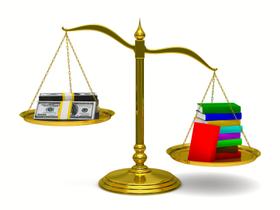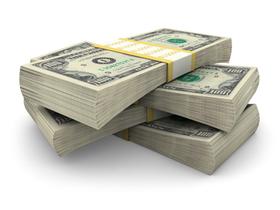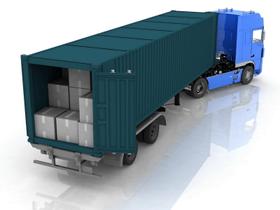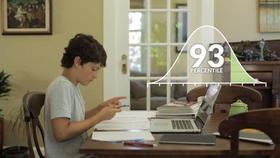Comparing private school tuitions from one school to another is in so many ways the classic apples to oranges comparison. Why? Because each private school is unique. Each school has its own expenses and sources of revenue. But the variables implicit in the calculation of tuition cost are what drive the numbers. Income and expenses are unique in the same way each private school is unique. With that apples to oranges analogy in mind let's look behind the numbers we see on Average Private School Tuition Cost here on Private School Review.
Understanding tuition
In its simplest form tuition is the amount of money that a school charges for educating your child. Tuition is revenue or income on the school's balance sheet. This is the dollar figure which a school has to charge per student in order to offset all the many and varied expenses of running the school.
To arrive at the amount to charge per student the school has to add up all of its expenses. From that total, it subtracts any income from investments, endowments, and gifts. That net expense is what our tuition charges must offset. To remain viable a school simply must balance its budget. It cannot spend more than it takes in. If it does, it will soon go out of business.
The number of students for which a school has places is the next part of the calculation. For example, if you only have places for 350 students and your expenses are $10,000,000, that works out to $28,571 per student per year as the raw tuition number. Since any prudent manager is going to set aside a percentage of income as a reserve adding another $1,000 to the raw tuition number gives you an idea of how this number is calculated. Naturally, the revenue calculations also assume that all places will be filled.
I am being very simplistic in my explanation of tuition and expenses. I am not an accountant but having run a private school at one point in my career I have a grasp of the principles involved, namely, you cannot spend more than you take in. I would recommend that you look at the financial statements of schools in which you are interested. All not-for-profit schools are required to file a Form 990 which is the equivalent of a tax return with the IRS. You can get a pretty good snapshot of a school's financial condition from that document.
What do you get for the money?
What you get for your money ideally should be defined by the quality of teaching first and foremost. That is what really matters to you and me. What is being taught and how it is being taught tops our list of priorities when selecting the right private school for our children.
The classrooms and other facilities of the school should enhance the learning experience by being adequate for the number of students per class. I have been in many small schools which produce excellent results in very modest surroundings. I also have been in large schools with remarkable facilities, some of which rival what you might find at our top colleges and universities. At both ends of the scale and all the way in between the bottom line has to be the quality of the learning experience. Always.
Why do some schools cost more than others?
There are several factors that drive tuition costs. Location and facilities and type of school are three of the most important factors.
Some schools cost more than others simply because of where they are located. Real estate prices vary widely throughout the United States as you well know. For example, it costs considerably less to rent space in Sioux Falls, South Dakota than in San Francisco, California. Granted these are extremes, but you can see how local real estate costs will be a factor in calculating expenses and consequently the amount which has to be charged for tuition.
Insurance costs vary from locality to locality as well. Schools need comprehensive liability and property insurance. That's not an expense a prudent private school business manager will stint on.
The school facilities vary widely as well. A 12 classroom K-6 school located in the 10-year-old education wing of a church or temple will cost less to run than a similar school housed in a 1930s mansion set on 30 private acres in the countryside.
Boarding schools generally cost more to operate than day schools. That's because they offer 24/7 supervision of your child as opposed to the 8 or 9 hours daily supervision a day school will offer. Schools specializing in remediating learning differences and disabilities cost more because they employ experienced, highly skilled, and trained para-professionals and professionals who work with students closely, often on an individual or 1 to 1 basis. That drives the labor cost associated with this kind of teaching much higher than when a teacher has a class of 12-15 students.
This video offers an overview of The Milton Hershey School, Hershey, Pennsylvania
The effect of endowments on tuition
Endowments are a major factor in determining both the full tuition to be charged as well as the amount of money that can be allocated to the financial assistance pool. To help understand this let's take a fictitious day school near you that charges $30,000 tuition. An independent review and analysis of your finances via the PFS (Parents' Financial Statement) determines that you can afford to pay $15,000 of that $30,000 tuition. The funds available for financial assistance will be awarded based on a number of facts including the number of applicants for financial assistance and the amount of money available for financial assistance.
Older, well-established schools such as Exeter and Hotchkiss typically will have substantial endowments. These funds have been built up over the years with gifts and bequests from former students. Professionally and prudently managed by many generations of trustees, these endowments provide a cushion against economic cycles and drastic increases in expenses. While not every private school is going to have a half-billion dollar endowment, it still needs to encourage support from its alumni and set aside reserves for the inevitable rainy day.
In tuition-free schools such as The Milton Hershey School, Girard College, and The Kamehameha Schools the income from these schools' endowments covers expenses. These schools are the exception, not the rule when it comes to the way in which they operate.
Sundries not included
Tuition is a big expense at a private school for most of us parents. However, you need to be aware that there are a host of smaller expenses which we euphemistically call sundries. These add up very quickly. Items such as medical insurance, meals, sports equipment, music lessons, trips and a host of other expenses have to be paid for by parents. The school usually bills these amounts monthly.
This video discusses paying for private school tuition.
We all need tuition insurance so that an unexpected event such as an illness or accident or even a family move requiring your child's withdrawal from the school won't leave you owing the balance of the academic year's tuition. Tuition insurance covers that for you. The contract which you signed with the school stipulates that you must pay tuition for the full year regardless of whether or not your child is able to attend for the full year. That is why tuition insurance is important both for you and the school. The school was counting on your tuition payments in order to balance its books.
How to review our tuition cost data
Start by deciding which state you want to explore. Then click on a county. Next refine the search results by specifying the grade levels - high school, elementary or pre-school - you are interested in reviewing. Or you can accept the default search results to review all schools in a particular county.
Let me walk you through the process: I selected South Dakota then Minnehaha County. Why Minnehaha? Because it seemed to have a fair number of schools to choose from. My next step would be to refine my search results to select only Pre-schools. Now I can further refine my search results to exclude any specific type of school in which I am not interested.
Our Average Private School Tuition Cost pages are designed to help you find schools that will fit into your budget. Having paid many private school tuition bills over the years for my four children I totally understand how important cost is. But as I mentioned above, there are several other factors which you need to consider as well. The prime factor is finding the right school for your child. Cost is important but it will not be as important as your child's happiness.
Questions? Contact us on Facebook. @privateschoolreview














